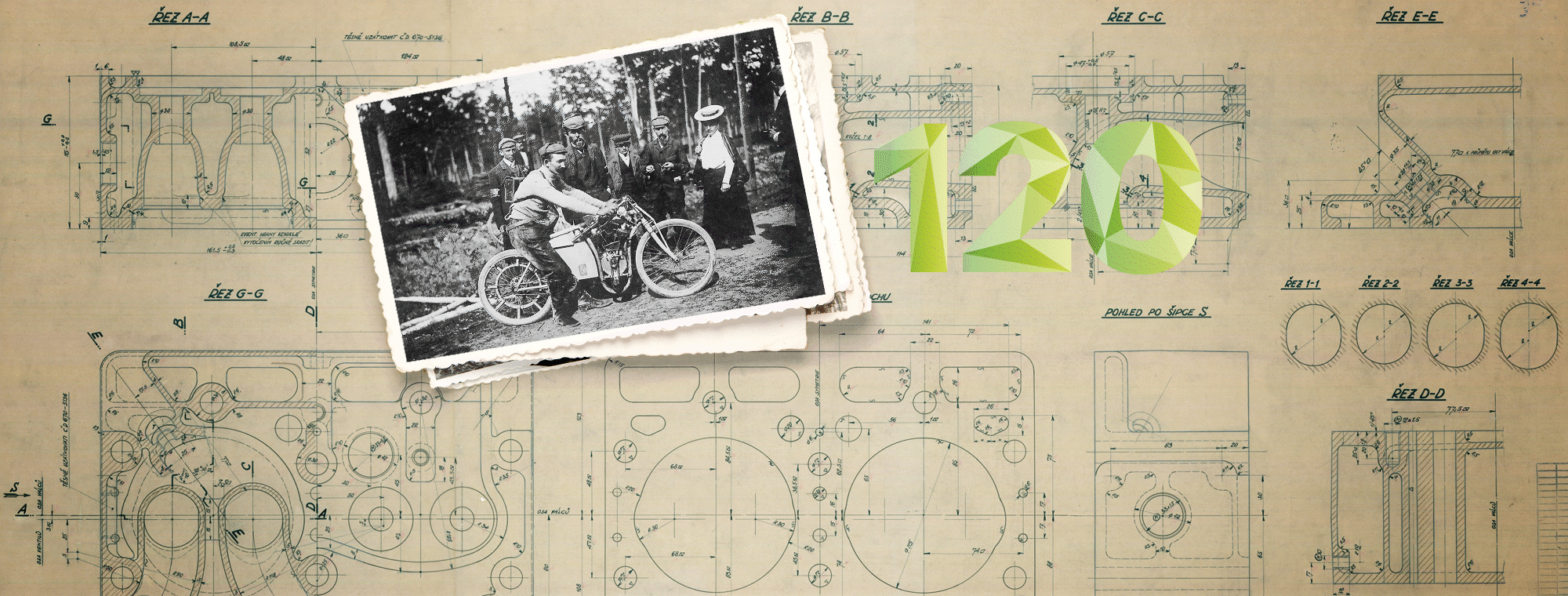Laurin & Klement achieved its first motorsport triumphs on motorbikes at the beginning of the 20th century. It quickly became clear from these successes that victories in motorsport boosted business and thus also the development of the up-and-coming company from Mladá Boleslav. For this reason, Václav Laurin and Václav Klement began building a racing car immediately after the premiere of the company’s first automobile, the Voiturette A. This strategy proved successful; with an output of 9 hp and a top speed of 45 km/h, L&K’s Voiturette B took first, second and fourth place in the famous Semmering race in Austria in 1906.
Laurin & Klement’s vehicles held their own against the competition in subsequent races at home and abroad, attracting even more attention to the car manufacturer. The FC model, which was based on the F series of passenger cars, guaranteed success during this period.
Between 1907 and 1909, the designer, racing driver and chief engineer Otto Hieronimus developed 19 vehicles of this type, which differed both in terms of appearance and technology. Depending on the classification, the in-line four-cylinder engines of the L&K FC had displacements between 2.0 and 2.5 litres with varying dimensions for bore and stroke. In all cases, the rear wheels were driven via a three-speed gearbox.
1908 was a particularly successful year for the ambitious automobile manufacturer. In March, it entered several vehicles in different classes in the Zbraslav-Jíloviště hill climb race and secured six first places, five second places and one third place. In Ries near Graz, Laurin & Klement celebrated a double victory in the two-litre class. Otto Hieronimus himself took first place in his class on the 686-kilometre long-distance drive from St. Petersburg to Moscow, thus proving the outstanding reliability of the vehicles he had designed. The L&K FC also left the competition behind at the demanding Prinz-Heinrich-Fahrt in Germany. Over nine days, the route covered 2,200 kilometres from Berlin via Kiel and Hamburg to Hanover, Cologne and Trier before the participants reached the finish in Frankfurt am Main.
However, this was not enough for Otto Hieronimus; he went on to design the Laurin & Klement FCS, which had an overhead-valve engine and a displacement of 3.5 litres. At the Semmering hill climb in Austria, the brand took the first three places in its class straight away. In 1908, Otto Hieronymus took the wheel at Brooklands in the UK on the world’s first test track built exclusively for racing and testing. On the 5.2-kilometre oval course with two banked bends, he reached a speed of 118.72 km/h, setting a new speed record for the FCS vehicle class.
The most powerful and uncompromising variant of the FC was the FCR in 1909. It had a slim body and an arrow-shaped radiator and achieved an output of exactly 100 hp (74 kW) with a displacement of 5.6 litres. The top speed was 140 km/h, which was incredible at the time. The vehicle made its debut at the Semmering, where Hieronimus immediately secured another class victory. He also won the overall classification at the Zbraslav-Jíloviště and Trieste-Opicina hill climbs in 1911.
The successful racing driver Alexander Count Kolowrat-Krakowsky was another personality who had a strong influence on Laurin & Klement’s corporate development during this period. The Bohemian nobleman, who grew up in the USA, decided against studying agriculture in Switzerland and instead spent his time in the workshop, tuning up racing cars. “Count Kilowatt”, as his friends called him, always came up with unconventional solutions. It was this improvisational skill and wit that enabled him to win the hill climb in Gaillon, France, in 1908.
On 10 October, Count Kolowrat registered for the competition under the alias Doconald, as he did not want his father in America to find out about his racing exploits. However, Kolowrat waited in vain for his Laurin & Klement FC, which was supposed to be delivered by rail in a wooden crate. Giving up early was out of the question, though. So, he decided to put his faith in the Laurin & Klement Type F he had arrived with. By then, the vehicle had clocked up 18,000 kilometres, a considerable mileage at the time. ‘Sascha’ and a mechanic spent the night preparing his L&K FC for the race; the pair stripped the car of everything that was not absolutely necessary for the competition. They even removed the seats and mounted small wooden boxes without backrests in their place. By optimising the weight of the vehicle, Count Kolowrat had managed to compensate for his car’s power deficit. In his class, he beat all seven rivals. This success had one minor drawback for Kolowrat personally, however – the secret he had kept from his father was now history…
| Find out more: Laurin & Klement FC – all photos available at ŠKODA Storyboard |
































